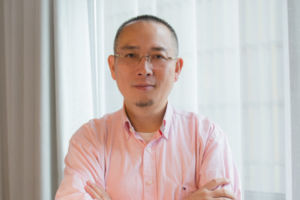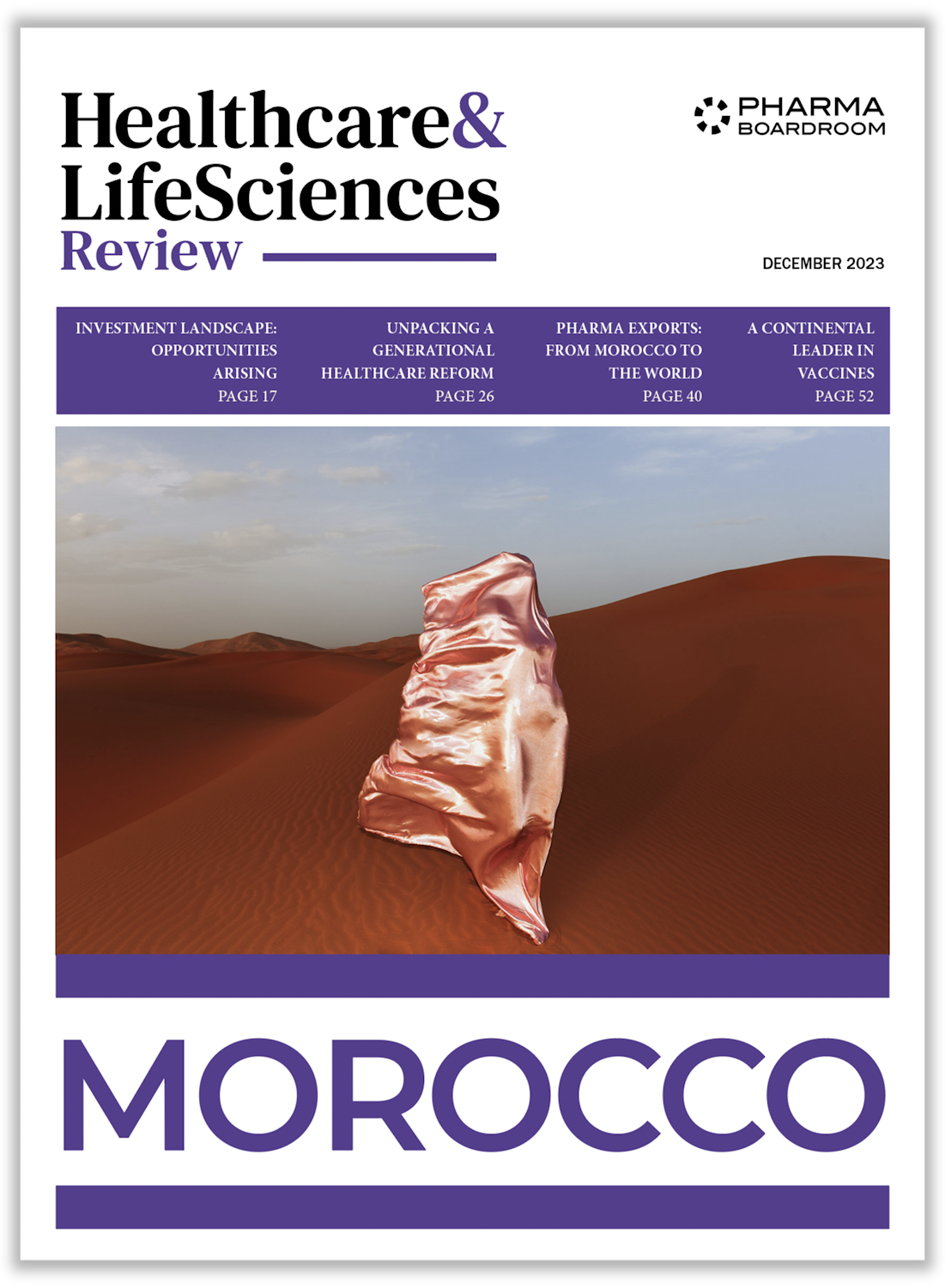GemPharmatech is a fast-growing service center for production, distribution and phenotyping of gene-modified mouse models with multiple subsidiaries in China, and an upcoming one in the USA. Chairman Professor Xiang Gao discusses the company’s story, its ambitions in China and globally, its recent Series A financing round, and its close partnerships with the academic community, pharmaceutical companies and CROs around the world.
Prof. Xiang, could you start by introducing your background to our international audience?
I am a “local” guy. I grew up in Nanjing and studied a zoology major in Nanjing University. For my master’s degree, I switched from zoology to biochemistry – again in Nanjing University. This actually turned out to be slightly boring, because of all the monotonous protein purifications. I, therefore, decided to head to the USA for a PhD in Anatomy and Developmental Biology in Thomas Jefferson University. As a matter of fact, techniques such as transgenics and knockouts were invented by developmental biologists. During my graduate study in the US, I naturally became interested in transgenics and gene targeting. Interestingly, I originally intended to use these technologies for uncovering gene functions and not for the development of disease models.
In 1994, I joined the Roche Institute of Molecular Biology (RIMB) as a Postdoctoral Associate. RIMB was ranked among the top 10 research institutes worldwide. Unfortunately, Roche decided to close RIMB in 1995, so I followed my boss to the Jackson Laboratory. During three years, I learnt a lot about classic mouse genetics in the Jackson Laboratory. On top of that, at Jackson Laboratory, I could have lunch overlooking the ocean!
I became a professor in Nanjing University in the year 2000. My lab does not focus on particular genes or organs, instead we try to understand physiological homeostasis in general. I believe this is the only way of truly understanding the complicated epidemiology of a disease. Complex human diseases always originate in multiple organs; they are not triggered by single factor.
What were the main reasons for establishing GemPharmatech?
In the year 2000, the Chinese government realized that there was a real need for mouse resources to support academic and pharmaceutical research. The Ministry of Science and Technology decided to set up a centre similar to the Jackson Lab in the USA. Luckily, I had just been recruited by Nanjing University and I successfully applied to this grant to set up the resource centre.
Unlike typical grants, this one involved purchasing land, hiring an architect to build the entire facility, and recruiting talent from scratch. Initially, our centre was focused on supporting academic research. However, along the way we encountered a problem: it is difficult for a business to grow while still being associated with a university. Therefore, we set up an independent government legal entity in the year 2010, called Nanjing University-Nanjing Institute of Biomedicine. This is essentially a joint venture between the local government and the university. In turn, we acquired freedom to hire people and run the business, and the business prospered.
However, we encountered a new challenge as we grew bigger. Since we were still associated with the government, we could not do business outside of China or even set up subsidiaries in other parts of China. Our people were not happy – if the business cannot grow, neither can they. We suddenly became a “training centre” where people would come to develop their technical skills and then, move on to a new thriving business. Finally, we convinced the local government and university to allow us to disassociate from them. At that point, GemPharmatech was born and we began to expand exponentially.
We have heard exciting news from GemPharmatech with regards to your recent Series A round of financing in May. Can you comment briefly on how this is expected to affect GemPharmatech’s operations?
We are aiming to expand and hence, we need capital. With these funds, we have established four production facilities in different cities of China, and we are looking for a fifth one in the North of China. In Chengdu, we purchased land and the building is on its way. If everything goes as planned, we hope to start production in August or September 2020. In Guangdong, mouse production will be ready even earlier: June or July.
In the long run, we aim to cover the North, South, West and East of China. We currently do not have the capacity to satisfy the needs of this growing market in the country, and hence, we need to expand rapidly. This is why companies similar to ours are not our competitors. There are plenty of customers in China for all of us.
Next year, we are also planning on opening a facility in the USA, and eventually, in Europe as well. Mice are living beings, and the shipping costs associated with them are substantial. This is why we need a local supply.
The company runs differently from the original institute. This means there are still many things that I am learning along the way, and we also need more talented people to support this growth.
With only 2 years of existence, you have already served over 750 customers. Who are your main customers?
At the beginning, we provided mice mainly to the academic community, but over time, our clients have shifted towards industry. I would say that we now have an equal ratio between academia and industry. With regards to industry, we are working with many large pharmaceutical companies and CROs whose needs are slightly different to those of academia. Big Pharma and CROs are looking for mature and stable models, whereas scientists in universities are looking to “explore”. It is important to note that we do not want to carry out pre-clinical services ourselves. We merely provide the resources to support such services.
As it happens, we recently signed a contract with Novartis in the USA. We are renting Charles Rivers’ facilities, because they want our mice to be produced in the USA.
Can you tell us more about your humanized animal models?
Humanized models are being developed in response to the shift in drug development from small molecule drugs to large protein and antibody drugs. As with any medicine, we need to test the efficiency of the antibody drugs in animals. Nonetheless, antibody drugs are specific to human proteins, and of course, neither mice nor monkeys express such proteins. The solution is genetically engineering the target of these antibodies to contain a human extracellular domain and a murine intracellular domain. We have done this for numerous checkpoint inhibitors, including PD-1/PD-L1s, to support the crowded space of immune-oncology. In total, we have made more than 100 different gene humanized mouse models.
There are also organ or tissue humanized models, such as immune-deficient mice that lack functional T cells, B cells or natural killer cells. These models can both accept human tissue and grow human tumors, allowing scientists to easily test their targeting drugs.
Nonetheless, the apparent bottleneck is that many of these drugs actually need a functional immune system. In response to this, we introduce human stem cells into mice to differentiate and form a human immune system in the murine body. This has been very efficient with T cells, but less so with B cells. Luckily, most of the immune checkpoints actually deal with T cells. Our humanized models are being used in CAR-T and other immune targeting studies.
Another example is our ability to partially humanize murine livers, because of the liver’s unique ability to regenerate. We first provoke the murine liver to slowly degenerate and then introduce human liver cells into the mouse. As a consequence, the mouse liver continues to shrink while the human liver grows; our mice have a total of up to 80% human liver cells.
Interestingly, American companies have recently opted to utilize humanized models. In this regard, Chinese companies are ahead. It is difficult to predict the size of our market – many of our models are new, and companies have yet to test them.
What are the ethical considerations related to GemPharmatech?
Our animal facility is one of the first ones in China to earn AAALAC accreditation and has maintained it for 13 years. We adhere to strict international standards. Our mouse models are considered the healthiest and of best quality in China.
We are also pushing towards automatization, such as our new automatic watering system, to facilitate the work of our employees. We are among the first companies in China to introduce such systems.
International companies that have come to do annual checkups in our facilities have left impressed by the “perfect” conditions – as good or even better than USA facilities. It fills me with pride to see our clients recognize the quality of our work. We now have full confidence when providing animal models in China.
Early this year the National Genetic Engineering Mouse Resource Bank was officially launched, with more than 9,000 mouse strain coefficients, making it the second largest base in the world after the American Jackson Laboratory. What role did you play in this project?
The resource centre was actually launched by the Minister of Science and Technology many years ago, but it does take time to hold one’s ground and the official inauguration was celebrated this year. There are now 30 infrastructure centers supporting a range of fields, including a cell bank, a material bank and a mutant mouse bank.
The government gave Nanjing University authorization to partner with GemPharmatech and co-develop the national murine bank. We are currently working very carefully to avoid infringing IP rights. As a matter of fact, national resource centres in many Western countries often have resources from external scientists. These scientists still hold IP rights of their own resource – meaning the IP rights are not transferred to the resource centre. We are operating the Chinese mutant mouse bank in the same manner. All the resources, including the ones owned by GemPharmatech, are available for everyone in the Chinese research community. Nonetheless, ownership and business are separate, and payments are made to the company.
What do you plan to achieve in the next 5 years?
In five years, I want to have many truly innovative animal models, ones that will facilitate or revolutionize drug development. I already have some ideas in mind. Our new models need to resemble the human body, and we have clear strategies to perform it.
I also hope to team up with companies similar to ours to improve experimental animal quality and innovation in China and promote the healthy development of the field.







